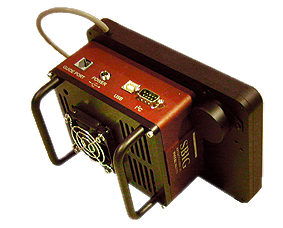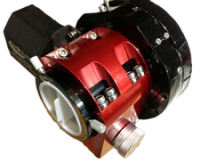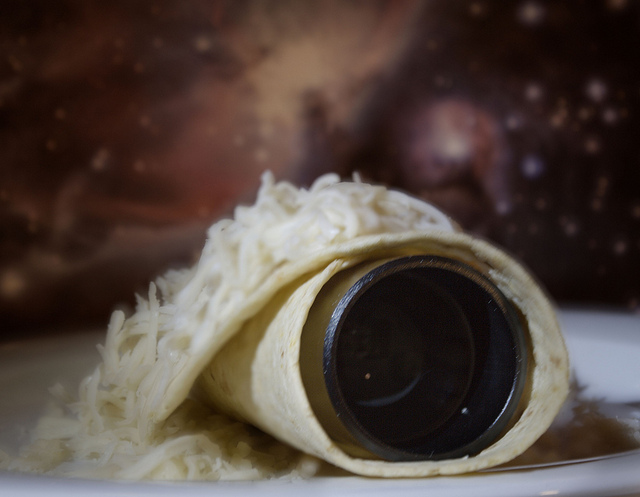 The Claustonberry Observatory was founded in the Spring of 2013, a few miles south of Marengo, Illinois, USA. The Observatory was founded by 3 amateur astronomers who developed in interest in astrophotography. Over the course of the past few years, many improvements to the observatory and equipment have been made.
The Claustonberry Observatory was founded in the Spring of 2013, a few miles south of Marengo, Illinois, USA. The Observatory was founded by 3 amateur astronomers who developed in interest in astrophotography. Over the course of the past few years, many improvements to the observatory and equipment have been made.
Equipment
Main Imaging Scope
T he observatory is currently using an Explore Scientific 127mm carbon fiber ED apochromatic triplet refractor as the main imaging scope. This scope provides a very nice compromise with a nice field of view and is fairly fast at f/7.5. It has an overall focal length of 952mm, and the carbon fiber body makes the scope light weight, which put less stress on the mount and tracking. The carbon fiber body also helps to reduce the negative effects of changing nighttime temperatures on focus, as the carbon fiber expands and contracts far less than aluminum.
he observatory is currently using an Explore Scientific 127mm carbon fiber ED apochromatic triplet refractor as the main imaging scope. This scope provides a very nice compromise with a nice field of view and is fairly fast at f/7.5. It has an overall focal length of 952mm, and the carbon fiber body makes the scope light weight, which put less stress on the mount and tracking. The carbon fiber body also helps to reduce the negative effects of changing nighttime temperatures on focus, as the carbon fiber expands and contracts far less than aluminum.
Main Imaging Train

SBIG STF-8300M CCD & SBIG FW5-8300 Filter Wheel
Currently in use for the main imaging camera is an SBIG STF-8300M monochromatic thermally electrically cooled CCD camera. Mono CCD cameras provide excellent detail for long exposure astrophotography, while the thermoelectric cooling helps to reduce and mitigate thermal noise, which can cause detail loss in a long exposure image. We image through photographic filters using a USB controlled SBIG FW5-8300 filter wheel, which houses RGB and/or narrowband filters. By imaging through red, green, and blue filters with separate exposures, monochrome images can be converted to true color images during processing.

Field Flattener
This allows the observatory to leverage the advantage of shooting in monochrome, while still being able to produce stunning full color imagery. We also employ the use of a field flattener in the imaging train to help keep images smooth and sharp all the way to the edge of the frame.

Moonlite Focuser
Focus is achieved by utilizing a MoonLite crayford style hand machined focuser and a high resolution stepper motor, which is controlled remotely via USB. The remotely controlled focusing mechanism allows for precise focus to be achieved, and also allows for auto focus adjustments to take place to help account for differences of focus between the various filters employed. The unit also auto adjusts the focus based on the current ambient temperature, so that even as temperatures drop overnight, perfect focus is maintained. The focuser is constructed of precision-machined aluminum and stainless steel, and provides extremely smooth and precise focusing, while being able to handle the weight of the imaging gear that is attached in the train behind it. We would highly recommend MoonLite products if you are looking for precision equipment that works extremely well and is made with great care.

Claustonberry’s Main Imaging Train
Mount, Pier & Guiding Package

Sirius EQ-G German Equatorial Mount
Currently the observatory uses a Sirius EQ-G German equatorial mount. This type of mount has two axes (right ascension & declination) to facilitate movement of the optics on top of the mount, but because it is aligned near perfectly with the celestial north pole (near the North Star), once a target is acquired, it must only move on 1 axis (right ascension) to track a target across the night sky. Precise tracking is extremely important for good astrophotography. Because the Earth is rotating on its axis, the stars appear to move across the night sky. This apparent movement of the stars, known as sidereal motion, means that during the long exposures required to produce our images, the telescope must move with the stars, or the images would be full of streaks and blurs, instead of pin point stars.

Orion 40mm Guidescope & Starshoot CCD Guide Camera
The tracking capability of the mount is greatly aided by the addition of a secondary telescope and secondary CCD camera that are attached to the main scope. This is known as a guide package. This smaller 40mm scope and mono CCD camera aid the tracking of the mount by “locking on” to a “guide star”, and sending tiny corrections to the equatorial mount. These corrections are imperceptible to the eye, but are sent any time the guide star moves more than a quarter of 1 pixel on the secondary CCD camera chip.
All of the above equipment is mounted to a pier plate, which is attached to a solid concrete pier that extends 5 feet underground, and is isolated from any structure above ground to prevent vibration and movement, all towards the goal of keeping any unwanted movement away from the equipment, which would have adverse effects on the images produced. Electric and communications are piped underground from the pier back to the control room. The equipment is protected by a weatherproof & alarmed enclosure that is modified to retract away from the pier and equipment when it is in use.
Observatory Control & Software
All of the communication and control of the observatory is done in the control room, located about 50′ from the equipment. Software is used to communicate with the various pieces of equipment. The control room is climate controlled, and includes security cameras and sensors for monitoring of all of the equipment on the grounds of the observatory.
SOFTWARE
Click on any icon to visit the homepage for the program.
ASCOM
The ASCOM Platform serves as the basis for standards of communication between all equipment, regardless of manufacturer. Almost all astronomy equipment is built upon ASCOM standards, which for the most part, are plug and play.
EQASCOM from EQMOD is the foundation on which the mount communicates with the computer, and helps the various programs to understand where the mount is pointed, how it is tracking, and how it is behaving. We use EQASCOM in lieu of any hand controllers or other input methods connected to the mount. It connects to the mount via an EQDIRECT USB cable from Shoestring Astronomy.
Sequence Generator Pro
SGP is a great piece of software that coordinates much of the equipment in a single software application, and allows for the planning and execution of an imaging run. In it one can define the types of exposures to take (bias, flat, dark, light), the lengths of exposure, the filter for each exposure, and number of exposures. It also controls and adjust the Moonlite Focus controller. It communicates with PHD to facilitate dithering between exposures. It also does much, much more, and we have found it to be the most versatile and easiest way to plan and control a night of imaging.
Stellarium is an excellent, simple, open source planetarium platform that assists in pointing the scope where we want to point it. It communicates with the mount through EQASCOM so we can aim at the target we want to image. It also allows for entering custom landscapes, so what you see in the planetarium software is a photorealistic reproduction of the actual observing site – useful for determining at exactly what time an object will be visible and available for imaging (i.e. when will it clear that telephone pole, or that roof line?).
Astrotortilla is an open source plate solving platform. It allows us to more accurately define the precise direction our telescope is pointing. It can “solve” an image by figuring out exactly what stars are in it based on the pattern and brightness of the stars, and can then translate that into extremely precise coordinates so that the mount can be aligned.
PHD2 by OpenPHDguiding.org is a simple to use program that controls the guide package of the telescope. It downloads images taken through the secondary guide telescope, and calculates the appropriate correction to make if those images show any drift. It will then send a command back to the mount to make an adjustment, if one is required to keep the telescope perfectly tracking the night sky.
PixInsight is an extremely versatile and powerful astrophotography processing tool. It allows for the calibration, registration, and integration of the dozens and dozens of sub exposures that generally make up the final image as it is presented here on the website – and has powerful post-processing tools and scripts designed specifically for processing astrophotography images.
SkyAlert
SkyAlert from Interactive Astronomy and their accompanying software package allows us to remotely view sky and weather conditions at the site as well as monitor weather at the site during imaging. The results are displayed here. It is a unique weather station option for astronomy as it allows for viewing of sky conditions, where as most commercial solutions do not include this option without spending thousands of dollars. It also outputs a Boltwood II text file on a defined interval to allow for control of other equipment based on conditions, such as focusing, starting/stopping images, and sounding alarms if conditions are unsafe for observing. The tech support is also top notch – if you are considering a weather station for your observing site, we would highly recommend Interactive Astronomy.








